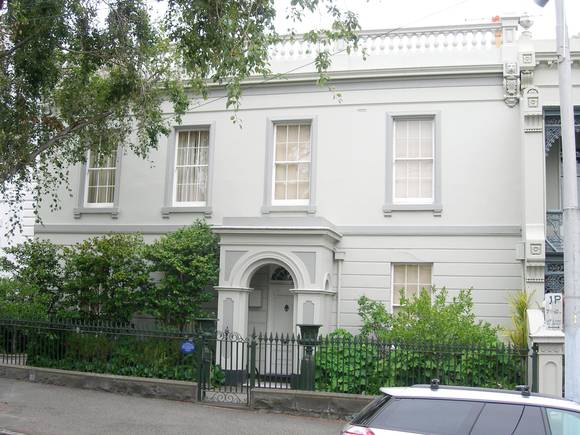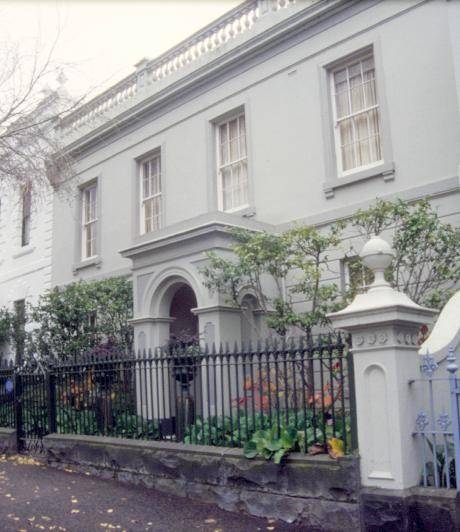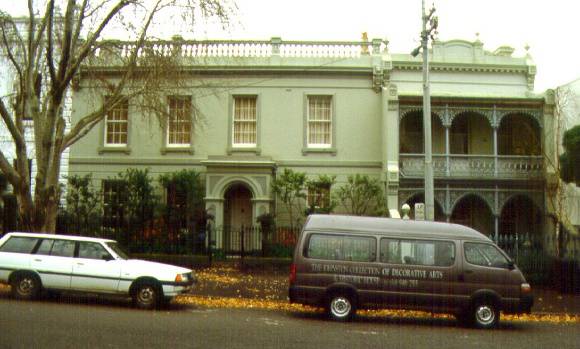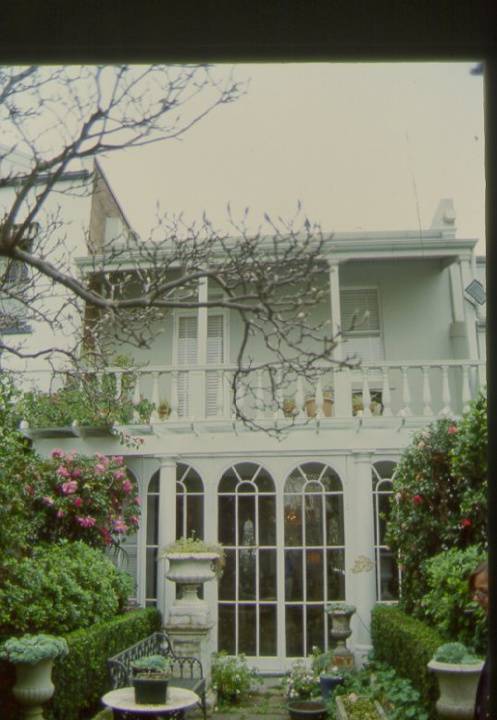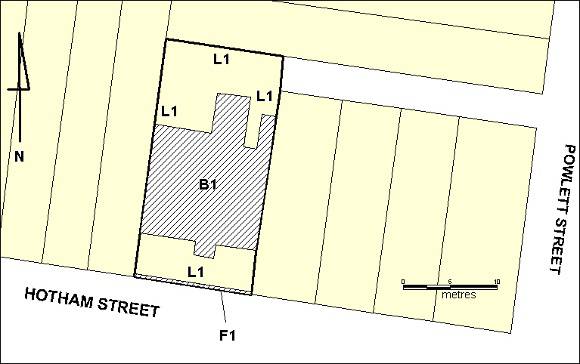| Back to search results » | Back to search page » |
|
FAIRHALL
Location154-156 HOTHAM STREET EAST MELBOURNE, MELBOURNE CITY
File Number10/024925-02LevelRegistered |
|
Statement of Significance
What is significant? Fairhall,154 Hotham Street, East Melbourne is a two storey brick house constructed in 1860. The main facade, recreated in a Georgian style, is probably unrecognisable from the original 1860 building. The house appears to have been extended eastwards to the boundary with 152 Hotham Street in 1869. At this time, although possibly later, the balustraded parapet and entrance portico were added. The main facade is stuccoed. The comprehensive Georgianisation of the house in the 1950s included changes to the fenestration to give a more harmonised appearance, the replacement of the front door and the insertion of a semicircular fanlight. The house was occupied from 1953 until 1986 by William R Johnston, a noted Melbourne antiques, furniture and art importer, collector and dealer. Internally the structure of ?Fairhall? remains essentially as Johnston left it, a cosmopolitan and personal expression. The drawing room, known as the green room, was once divided by bi-folding doors but these were removed by Johnston and replaced by a pair of columns with Ionic capitals. Similarly, he inserted a pair of columns with Egyptian capitals into the main first floor room, known as the yellow drawing room. The hallway and staircase have a dado height timber wainscot. All the cornices are quite plain. The single storey kitchen area at the rear is faced with beaded lining boards. The rear of the green drawing room was extended by Johnston, and French windows were inserted leading to the small rear garden. The first floor verandah with canopy was added over this area in 1993. The cast iron gates to the rear garden were moved to Fairhall in 1992 from Johnston's country residence at Tylden, Central Victoria. The date of the front fence is not known, but is compatible to the house. Fairhall is now a house museum, the permanent home for the Johnston Collection. How is it significant? Fairhall is of architectural and historical significance to the State of Victoria. Why is it significant? Fairhall is architecturally significant as a clear expression of the movement in the 1950s among a small group of elites in Melbourne, some of whom were to be instrumental in forming the National Trust in Victoria, to adopt a sophisticated and cosmopolitan outlook. It demonstrates the interest and aspirations of some post-Second World War elites for a nostalgic form of Europe, particularly England. In the 1950s Johnston considerably altered the internal and external appearance of the house to align it loosely with the Georgian style of late eighteenth century London. This conscious affectation is reflected internally by the columns and fireplaces Johnston added, which attempted to give the house a more sophisticated, informed and cosmopolitan flavour in contrast to the restrained style of the mid Victorian period from which the house originally dates. Fairhall is historically significant for its associations with William R Johnston, a noted collector and dealer of antiques, artworks, porcelains and furniture. Whilst he specialised in importing Georgian and Regency pieces, he was an eclectic collector and was not a purist. His eclecticism is reflected in the collection now housed in Fairhall.
Group
Residential buildings (private)
Category
House


